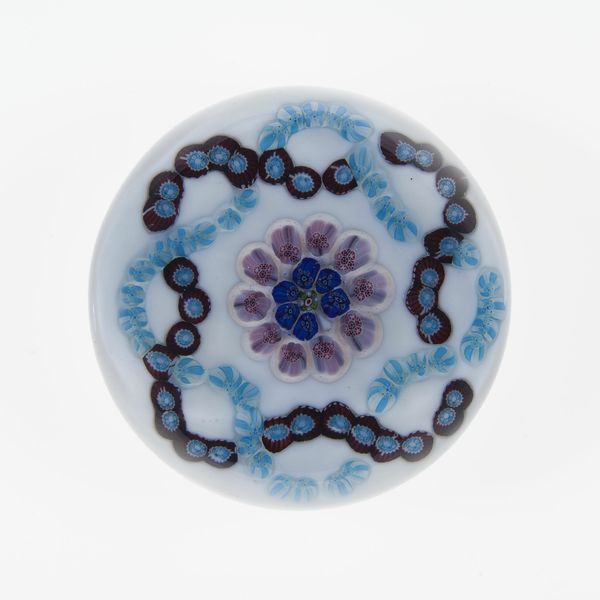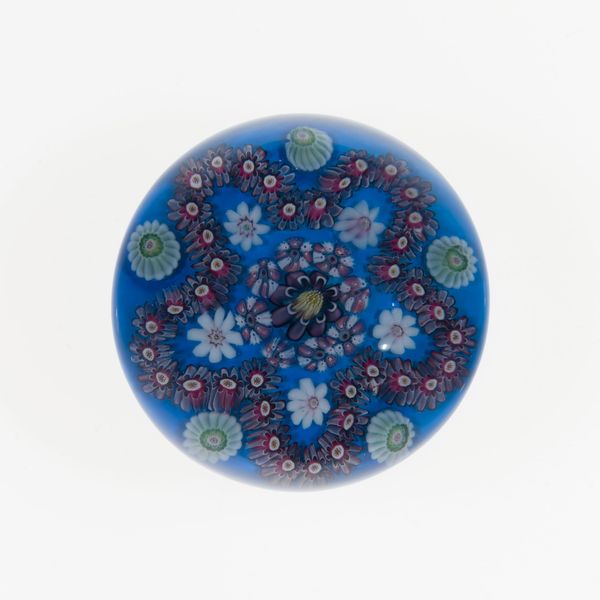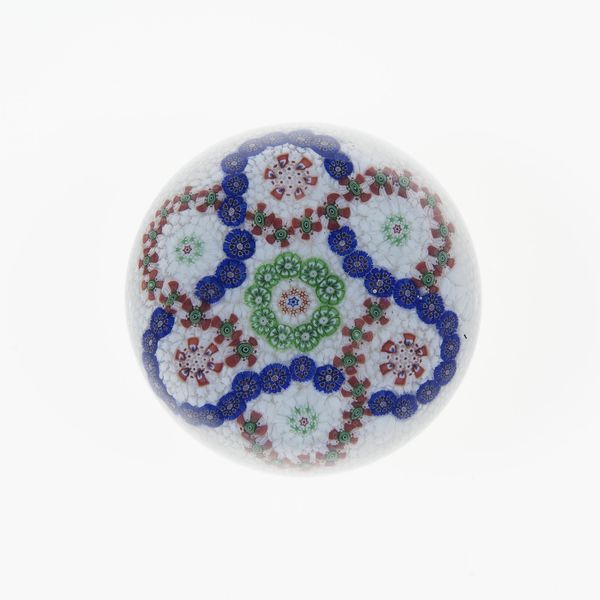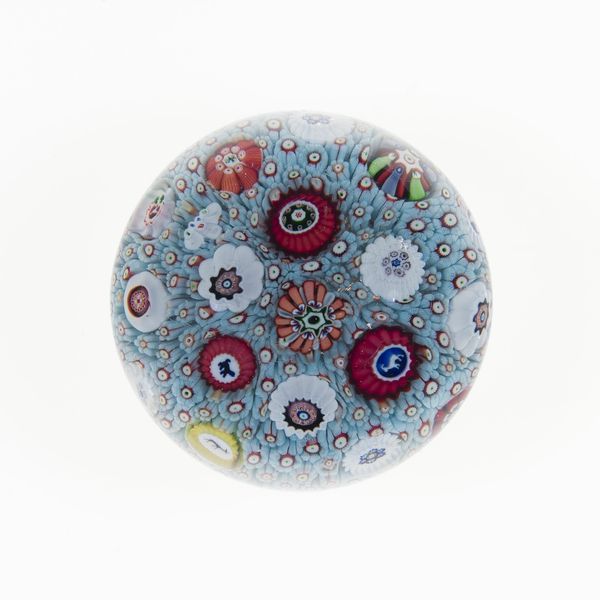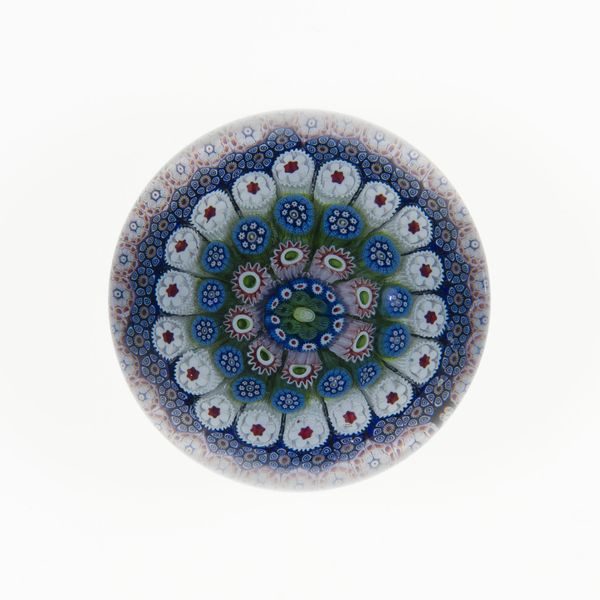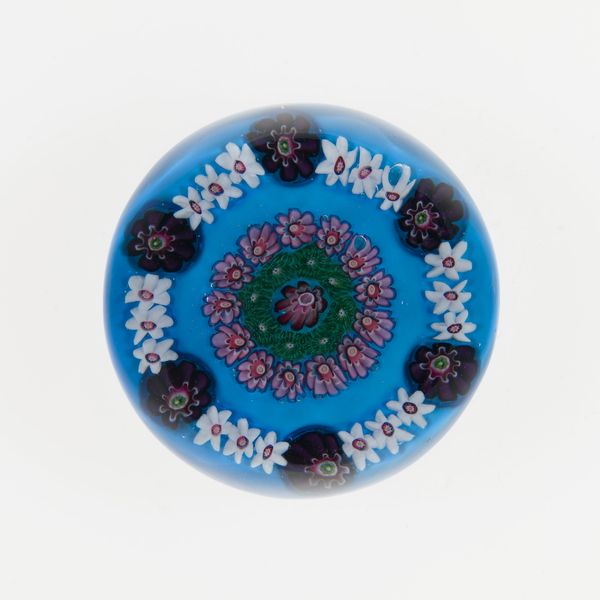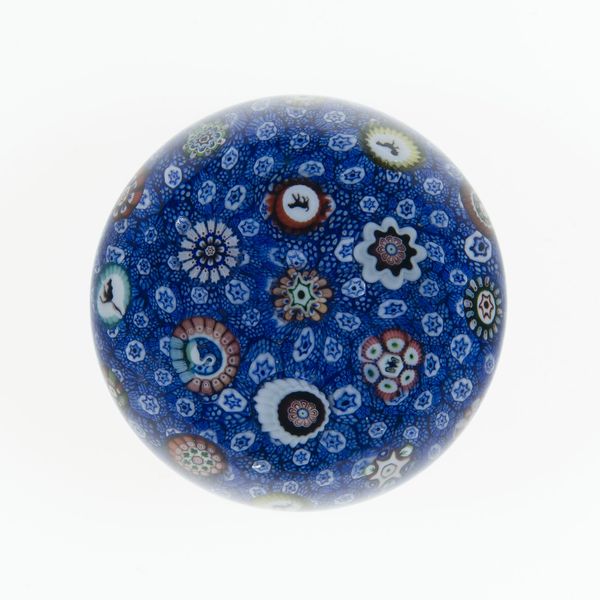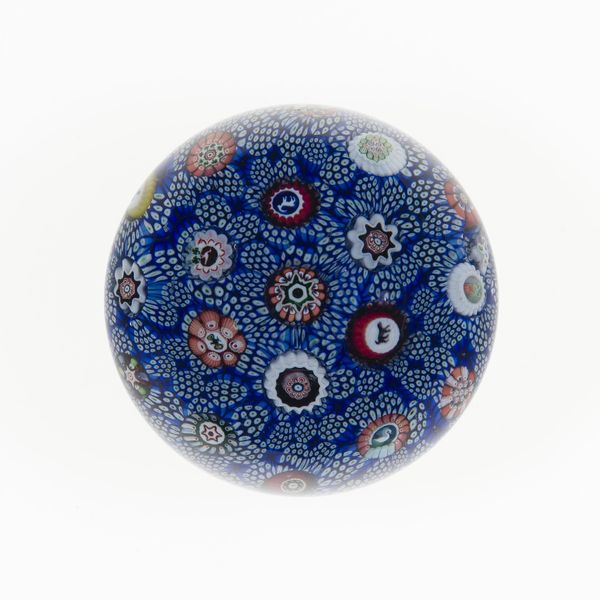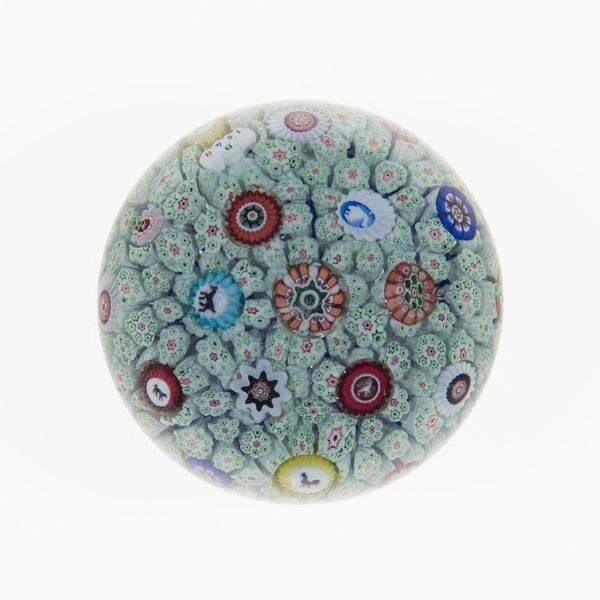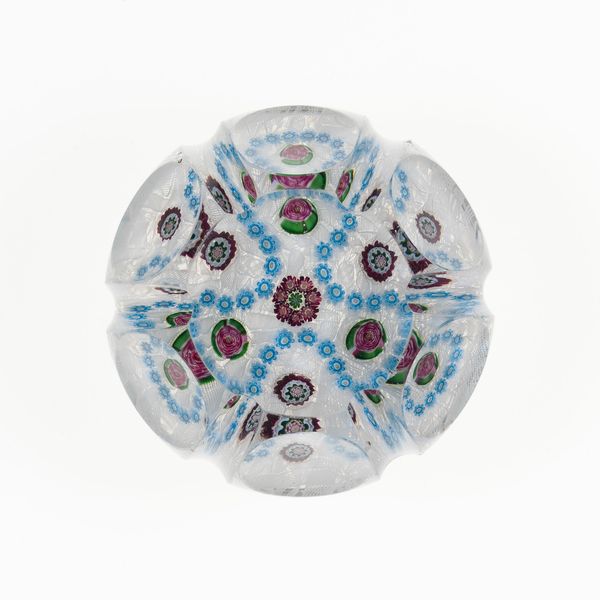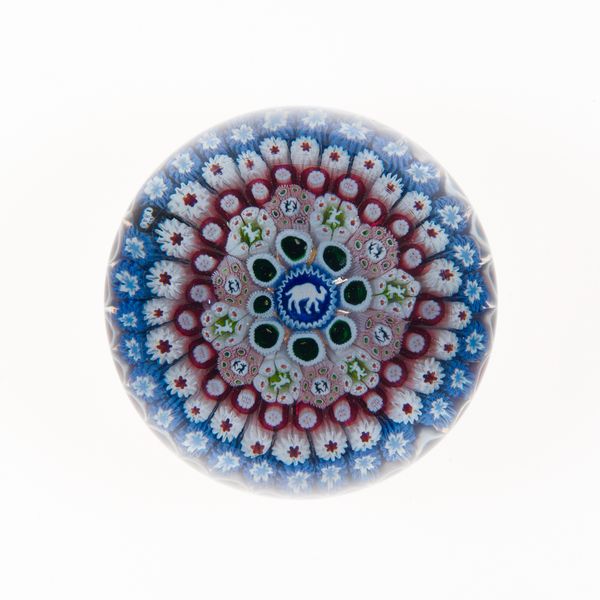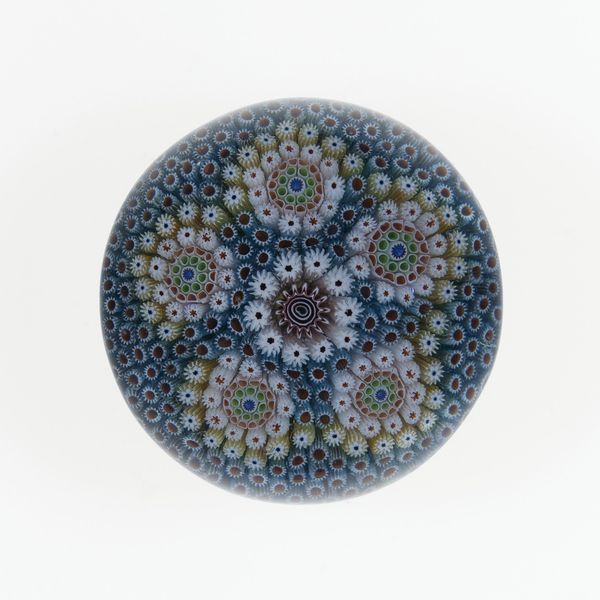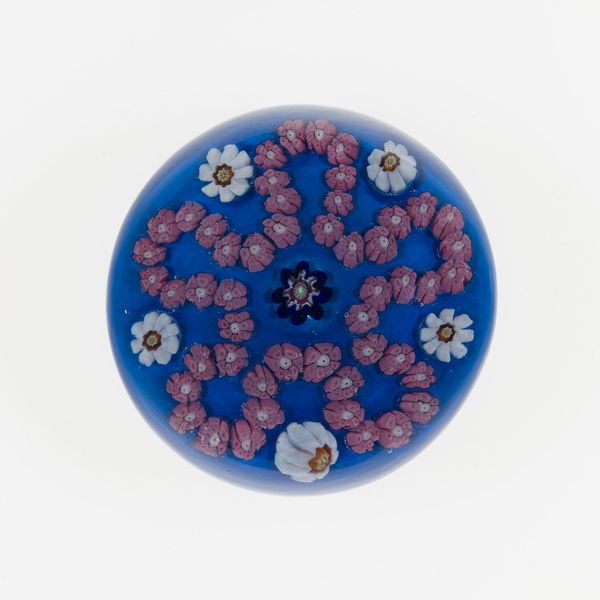
glass
#
glass
#
geometric
#
decorative-art
Dimensions: Diam. 7.9 cm (3 1/8 in.)
Copyright: Public Domain
Curator: Here we have "Paperweight," a captivating glasswork likely crafted by the Clichy Glasshouse between 1845 and 1860, now residing at the Art Institute of Chicago. Editor: My first impression is a sense of contained joy. The smooth, cool glass encases an effervescent floral arrangement, almost like a miniature celebration preserved in time. Curator: Precisely. And beyond the surface beauty, consider this piece in its socio-historical context. The Victorian era, a time of rigid social structures, saw the rise of elaborate ornamentation as a form of personal expression. This paperweight, with its intricate floral design, provided a socially acceptable way for people to demonstrate luxury and cultivate relationships via gifts. Editor: I’m particularly drawn to the interplay between the geometric and organic elements. Look closely, and you'll notice how the overall circular shape of the paperweight mirrors the circular patterns within the design. There’s a satisfying sense of balance and order, an internal logic built out of pure aesthetics. Curator: Moreover, the flowers are not merely decorative; they speak to the Victorian fascination with the Language of Flowers or floriography. Gifting someone flowers could be like delivering secret messages, whether those communications focused on the personal and romantic or aimed at political relationships. The symbolism woven into this unassuming glass piece may hint at the values and narratives of its time. Editor: Indeed, the technical skill required to manipulate glass in such a detailed way is fascinating. The choice of colors is striking, creating internal contrast but harmonizing overall. And how the light refracts within the piece, causing different nuances from all angles—a dynamic dialogue. Curator: When you hold an item like this paperweight, consider who the original audience was, who made it, how the materials came to be in their place, and whether the flowers or the composition mean to convey a sentiment. That thinking may help one better contextualize beauty or material items within their world, but I appreciate your keen eye to the patterns. Editor: Ultimately, what I find striking about this little glass treasure is how something so meticulously designed and crafted can be simultaneously delicate and enduring, prompting aesthetic pleasure centuries after its creation.
Comments
No comments
Be the first to comment and join the conversation on the ultimate creative platform.
